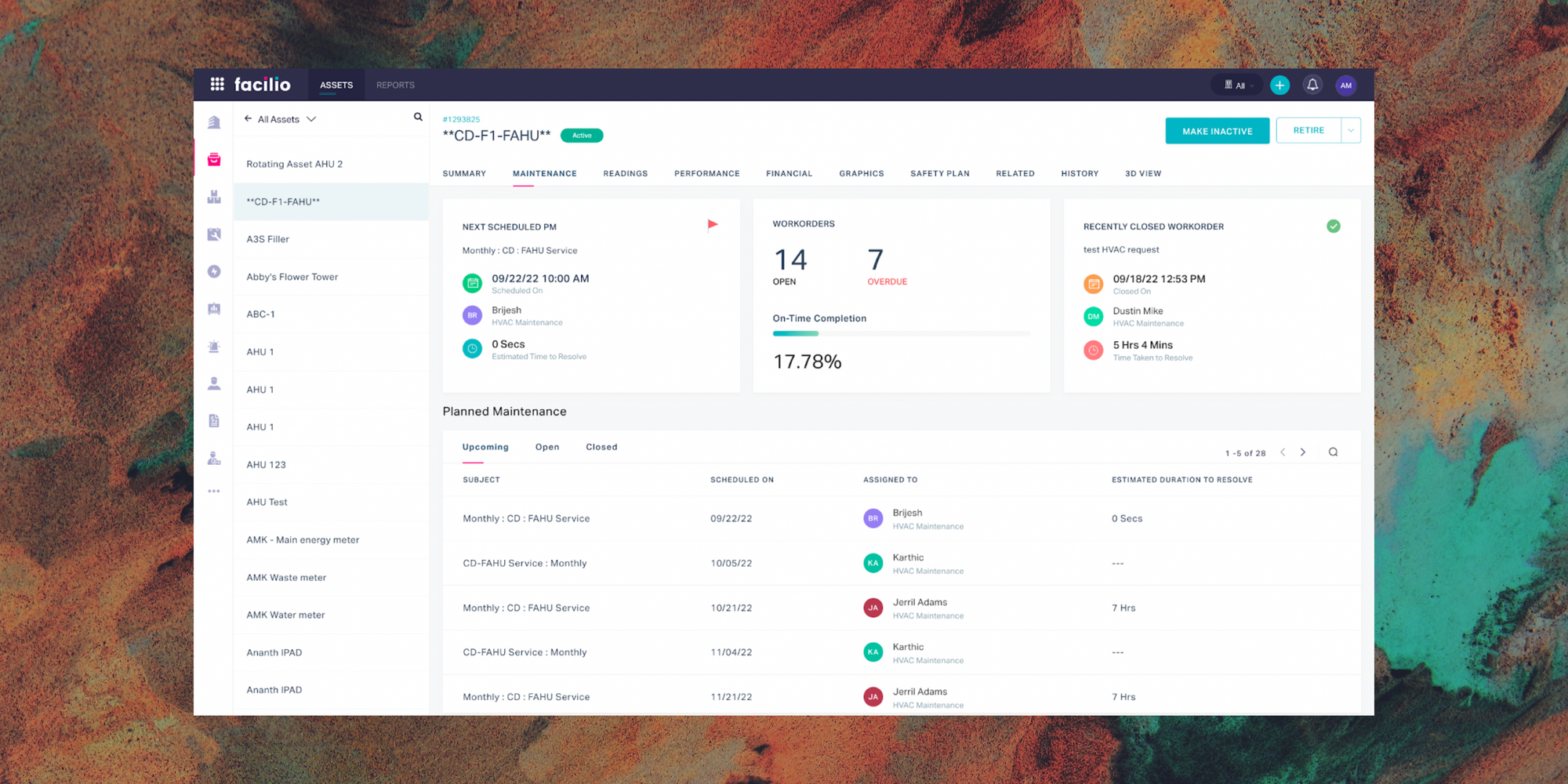maintenance management
Preventive Maintenance Scheduling: A Simple Guide
A preventive maintenance schedule is a plan for keeping your equipment, machines, and facilities in top shape.
The idea is to perform regular check-ups and maintenance tasks to avoid any unexpected equipment breakdowns or issues. This helps keep facilities humming while also prolonging equipment lifespans.
So, what kind of tasks are involved in preventive maintenance (PM)?
It could be anything from cleaning and lubricating, to replacing parts, or even updating software. The specifics will depend on the type of equipment you have and how often it's used.
Some tasks might need to be done daily, while others might only need to be done monthly or yearly. The important thing is to have a plan in place, so you know what needs to be done and when - and this is called preventive maintenance scheduling.
1. Time-based: performed at regular intervals
2. Usage-based: based on equipment usage
3. Condition-based: maintenance scheduled based on equipment condition
4. Predictive: uses advanced technologies to predict when maintenance is required
The type of PM performed on each asset depends on its needs, operational impact, repair/replacement costs, and more such factors. We'll talk more about these in the next section.
Bottom line, any maintenance that is planned ahead of time is considered preventive maintenance.
Suggested read:

6 steps to create a preventive maintenance schedule
Here are the steps to create a preventive maintenance schedule:
- Identify the equipment that needs preventive maintenance: This includes machines, tools, vehicles, and other assets that are critical to your operations and need regular maintenance to remain in good working condition.
- Determine the tasks that need to be performed for each piece of equipment: This may include tasks such as lubrication, cleaning, calibration, and inspection packed neatly into a PM checklist.
- Establish a regular schedule for performing the maintenance tasks: This should take into account the equipment's usage, operating conditions, and O&M manual and the frequency at which each task should be performed ( daily, weekly, monthly, or annually.)
- Prioritize maintenance for important assets: Prioritize tasks based on their impact on safety, reliability, production efficiency, and business impact.
- Assign responsibility for each maintenance task to a specific individual or team: This will ensure that the tasks are completed on time and that the equipment is properly maintained.
- Record the maintenance activities in a log or database: This will allow you to track the performance of the equipment, identify trends, and make any necessary adjustments to the maintenance schedule.
- Monitor the effectiveness of the preventive maintenance program and make adjustments as needed: This may include modifying the schedule, adding new tasks, or making changes to the personnel responsible for performing the maintenance.
The key to creating an effective planned preventive maintenance schedule is to regularly inspect and maintain equipment to prevent potential problems from arising.
That's a lot of data to keep track of with paper or spreadsheet based processes, isn't it?
Enter - Computerized maintenance management systems (CMMS software)
PM scheduling is cake with CMMS!
How to schedule PM tasks using a CMMS?
CMMS software are tools that are designed to help organizations simplify, streamline, and automate their maintenance operations.
Here's how PM scheduling works with a CMMS:
- Define the maintenance tasks, like inspections, cleaning, and part replacements.
- Input the task information into the CMMS, including details like location, who's responsible, and materials needed.
- Set up automatic reminders to make sure tasks are completed on time.
- Use the CMMS to schedule maintenance, taking into account usage, availability, and other factors.
- Keep track of progress with the CMMS and make adjustments as needed.
- Generate reports on maintenance activities to identify areas for improvement.
Benefits of preventive maintenance scheduling
There are several benefits to implementing a preventive maintenance schedule, some common ones include:
- Increased equipment reliability and availability
- Improved equipment performance
- Reduced repair costs
- Improved safety
- Enhanced customer satisfaction
Suggested read:

What are some examples of preventive maintenance tasks?
Anything from repairs and replacements to cleaning and lubrication can be a PM task, depending on equipment needs. Here are some examples of PM tasks:
- Lubricating moving parts on a machine to reduce friction and wear
- Cleaning and adjusting the belts and pulleys on a conveyor system
- Checking the tire pressure and tread on a company vehicle
- Calibrating a temperature gauge to ensure accurate readings
- Inspecting the condition of a machine's electrical components
- Testing the fire extinguishers and sprinkler systems in a building
Suggested read:

Avoid surprises and keep your equipment humming along with effective PM
If you're making the switch from reactive to proactive maintenance, a CMMS is the absolute best place to start.
CMMS is a cornerstone software for operations and maintenance, and houses all the data that you need to optimize your PM programs.
When it comes to maintenance, the CMMS you choose can make all the difference.
Legacy CMMS were built as systems to record, and not of action - which limits their capabilities automating work order scheduling and asset management.
A modern facility however, has a hundred different moving parts that all need to work together to deliver safe, efficient, healthy, and productive spaces. You need a CMMS built for today's world and deliver high-performing facilities.
Facilio's Connected CMMS is a reimagined approach to help connect your people, processes, and systems in a meaningful way to enable truly connected optimization for your business.
It's like CMMS, but with superpowers!



